Where it looks like itself
25 July–11 August 2013
TEMP Art Space, New York
Cameron Crawford, Allie Pisarro-Grant, Marian Tubbs
-
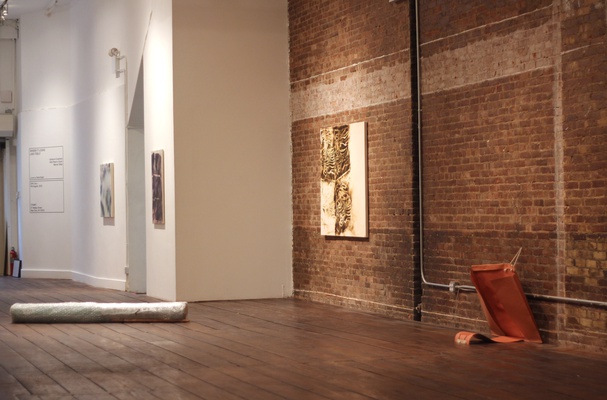
-
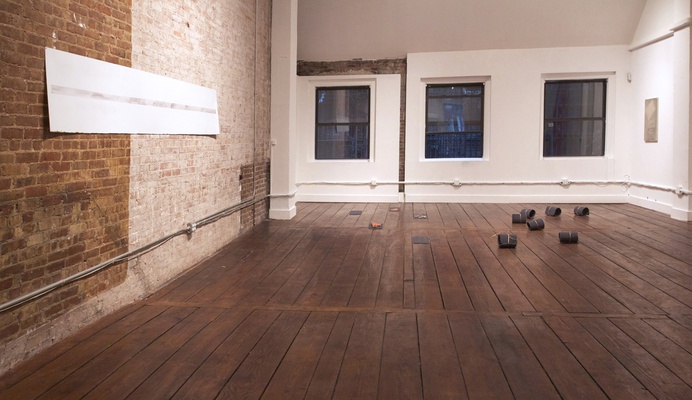
-
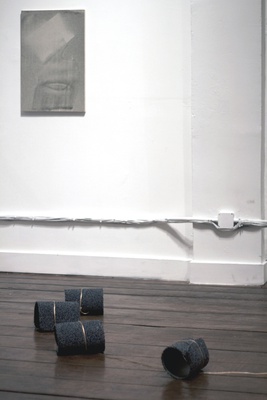
-
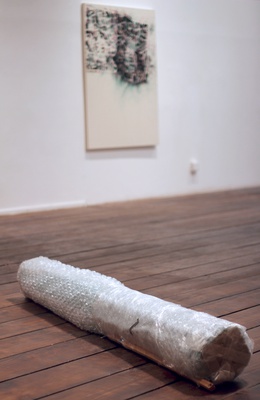
-
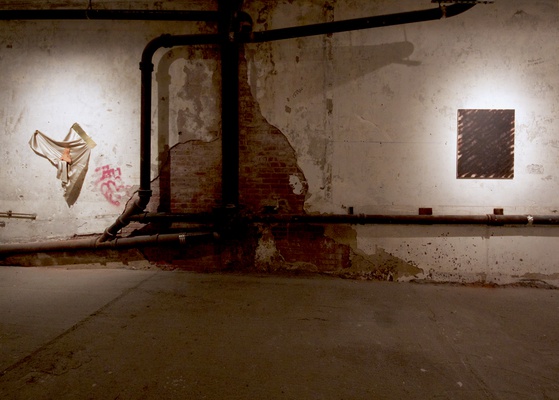
-
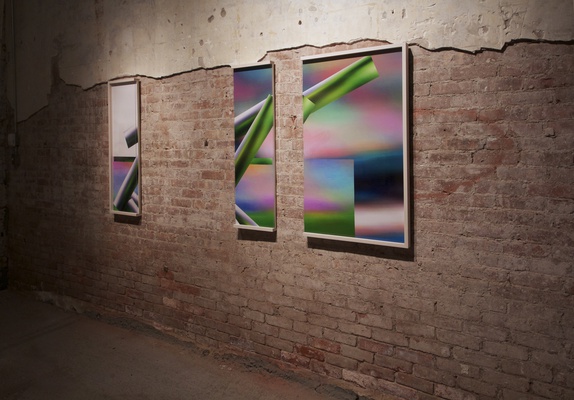 Marian Tubbs
Marian Tubbs
-
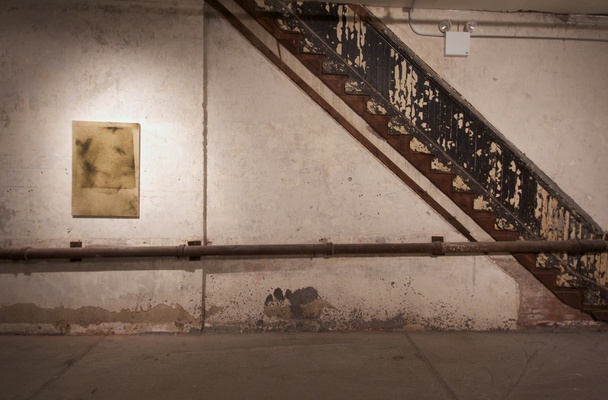 Allie Pisarro-Grant
Allie Pisarro-Grant
Where it looks like itself is an exhibition of recent work by Cameron Crawford, Allie Pisarro-Grant, and Marian Tubbs, three artists whose work engages on a conceptual level with materiality and media. All three work largely within self-reflexive material practices, in which form and material are carefully considered as such, but also for their social, historical and ideological implications. The works are about what they are made of, how they are made, how they occupy space—form follows a lack of function; form follows itself.
Often the artists work with found and everyday matter, interspersed with luxury materials (silk, pearl) to form haphazard yet formalist structures and installations. For instance Marian Tubbs’ Allow time (2013): a series of found carpet tiles, installed in situ, some open and “pixellated” with silk and others rolled and bound by a single gold wire. Or Cameron Crawford’s massive Babies. Babies. No Babies. (armpit) (2010), constructed of (among other materials) wood, canvas, pine needles, silver chain, dental floss, mother of pearl—with the inward curve of the canvas echoing the form of the title’s parenthetical last word.
And Allie Pisarro-Grant, who makes paintings using chemical pigment dyes meant for the textile industry, forming abstract compositions that split into dots of pigment as the dye spreads across canvas. With each artist, the intended uses of specific materials are disregarded or shifted in order to point back towards their essential materiality. The tension of the work, moreover, exists in the apparent uselessness of tangible things in an increasingly digital world.
If it looks like itself, what does it mean? It means also itself: the works are (in part, to generalize) about their own existence, the banality of the things they are made of and the irrationality of the processes by which they are made. Impossible to write about the works without the sentences turning back on themselves—because that’s what the works do, inhabit a language (visual, material) and turn it back on itself. In a way they are constructed as language is, made up of open signifiers—wood and carpet and silk and floss—that in combination form something that might settle into meaning. But never (and this is crucial) a single or exact meaning: rather, they delineate a space for questions without resolution, for material possibilities.